by Lux
If you think you may need a Faraday cage and you don’t want to spend too much time or money and you want it to look nice in your den or home office then this is the project for you. You can use your Faraday cage to store some of your electronic devices when they are not in use and protect them against the effects of a solar storm or an electromagnetic pulse from an exoatmospheric nuclear detonation.
If you do not have one already, you will need to purchase a metal file cabinet.
This file cabinet has L shaped cut outs and a section of metal bent outward to act as stops to keep the drawer from being pulled out all the way. I bent these back in and removed the drawers.
Step 1:
You will need some hardware as pictured. The size does not matter as long as the screws, nuts, flat washer and lock washers all fit together. You will also need ring terminal crimp connectors and wire.
You will need to make three cable assemblies. Two of them will have a ring terminal on both ends. These are to electrically connect each drawer to the back or side of the inside of the file cabinet. This needs to be done because the plastic slides that the drawers slide on are not conductive. If the file cabinet you use has metal bearings, you will still want to attach the drawers to the inside of the file cabinet to insure a good electrical connection. The other cable attaches to the outside of the file cabinet to connect the file cabinet to a metal grounding rod that has been pounded into the ground.
The cables that connect the drawers to the inside of the back of the file cabinet need to be long enough to allow the drawer to be opened up all the way. You may want to make them long enough to attach both ends of the cable while the drawer is outside the cabinet.
Step 2:
Next drill a hole in the back of each drawer and two holes in the back of the file cabinet. These holes need to be big enough for the screws to be attached. The screws on the back of the drawers are attached with a cable on the outside of the back of each drawer. As you can see from the picture of the screw on the back of the inside of the file cabinet, the screw is installed and captive before the other end of the cable that is attached to the drawer is attached to it. This allows the cable to be attached to the back of the file cabinet without having to hold the screw in place from the outside of the cabinet. Note that when attaching the screws to the back of the cabinet, one of the screws attaches the third cable to the outside of the file cabinet.
Step 3:
The file cabinet I purchased did not have a bottom. To be an effective Faraday cage, all sides must be electrically conductive and electrically connected together. There are several ways to make a conductive bottom for the file cabinet (or just buy one that has a bottom) such as aluminum foil glued to a big square piece of wood. The edges of the bottom of the file cabinet are painted and not electrically conductive so another cable would be needed to attach it electrically to the cabinet. I chose to use a sheet of aluminum.
I cut the sheet to size and removed the sharp edges. I drilled through hole for sheet metal screws.
Next I taped the plate to the bottom of the cabinet and used the same drill bit I used to drill the though hole to make divots for the smaller through holes for the sheet metal screws to cut threads in to. Next I attached the plate to the cabinet with sheet metal screws and added some pieces of gasket material (industrial waste from my day time job) to act as feet (optional).
When you are done, use an ohm meter to make sure both drawers are electrically conductive with the cable connected to the outside of the file cabinet.
Step 4:
I can still use my Faraday cage as a file cabinet with files in the front and stash my electronic gadgets, radios and spare parts in the back of the drawers.
For additional information about building, testing and installing Faraday cages, click the link and check out the videos. If you link this instructable, use this link, it looks better.
This great article which was recently posted on Instructables.com by Lux, a frequent visitor to this site, who gave me permission to repost the article in its entirety here.

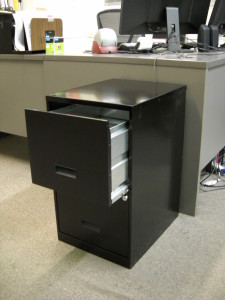
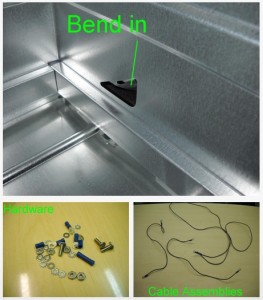
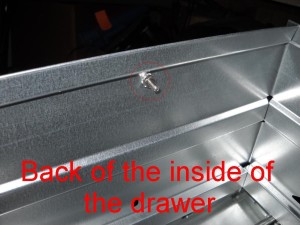
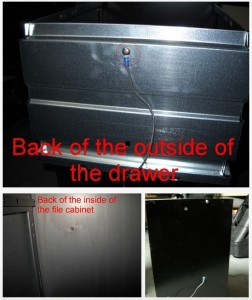
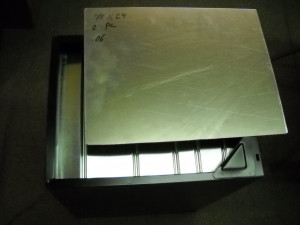
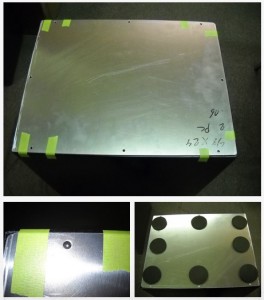
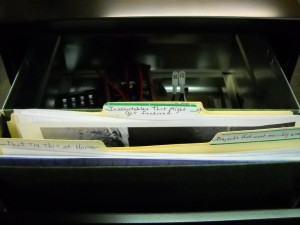








3 comments
Awesome! Thank you! I have a 35 year old filing cabinet that will now be updated to work for me!
Author
Glad you enjoyed the article Zellie.
Hey Lux, during (or after) posting this were you able to find any results posted from EMI shield testing a filing cabinet by any chance? We are compiling results to see which DIY faraday cage routes are the best.